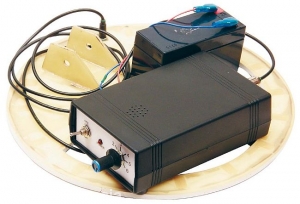patryk-84a wrote: I think I used to start building this pulse PE, but I stopped because of the transistor's lack. In the electronics store, they could not advise me anything, and I did not have access to the net. Somewhere to me this whole built-in circuit disappeared (only the transistor was missing), even the probe was already done. I will take this impulse from LUCASLAB for probably the most popular elements.
If you want, I can send you some pieces of this KP103Ż I have somewhere a few of the scrapped Soviet equipment

but as I said, I strongly recommend the pulse from "Lucaslab" it is according to me the best impulse detector that will easily put any amateur - and you can buy parts in every store. If you want this modified PCB I will send you an e-mail - it is in a large resolution in JPG, of course I will give you the dimensions of the tile just put it in some text editor and set the dimensions of the printout, you can use the originals. tiles but it is larger and has thinner path through which the plate digests longer because the etchant must digest more copper. The LF357 operational gain is used in this detector - but it can be replaced by another high-gain op. - I put, for example, LF356 and it's ok, in another I put OP07 and it was great too! both op-amps are cheap and generally available.
You can even throw in the popular TL081 or uA741, but the detector's range and sensitivity to small items will drop slightly.
I have already built 3 such detectors and everybody is flying to this day.
If you had any problems during construction, it's a bold move
Kol.Robokop
What I am proposing is the one there (n-th) transformation of sandbanks
simply modern elements were used there, removed these atypical FETs, only one N-feta was left (popular BF245)
The inverter has been slightly modified and a few other minor modifications - a good effect has been achieved - the original sandbanks do not reach its heels! I know because I built it too. Besides, if I think that someone had to look for LM709 Ma501 systems these days, etc .. then I sincerely sympathize - these monuments are probably the easiest to find in
some antique shop

As for the salamanders or fisher - I think they are more complicated than All1 - because there are fewer documentation and descriptions, fewer people built them. Added to this are operational amplifiers from the CA family that are not so easy to get! And All1 is in a simplified version on a single-sided straight board, the only problem (it is not such a big problem) is to build the probe itself because it has to be tuned in resonance to the frequency response then it should be balanced by monitoring the voltage (and shape of voltage) unbalance with an oscilloscope. Therefore, I think that due to the innumerable number of elaborate and the number of constructors - amateurs counted in thick hundreds, All1 is the simplest VLF / TR detector to be assembled.
Ps.Salamandra and F55 are basically the same! these are static detectors
nowadays they are used to search for large military objects, and to a limited extent to the location of underground installations, and when it comes to detectors focused on minor finds and universal
dynamic detectors are absolutely dominant - mainly due to their numerous advantages - m.in. faster terrain searching, easier operation and running of the detector, slightly more effective discrimination and much greater sensitivity to small objects from non-ferrous metals
 and that cars from the nearby parking lot would not
and that cars from the nearby parking lot would not  .
.





